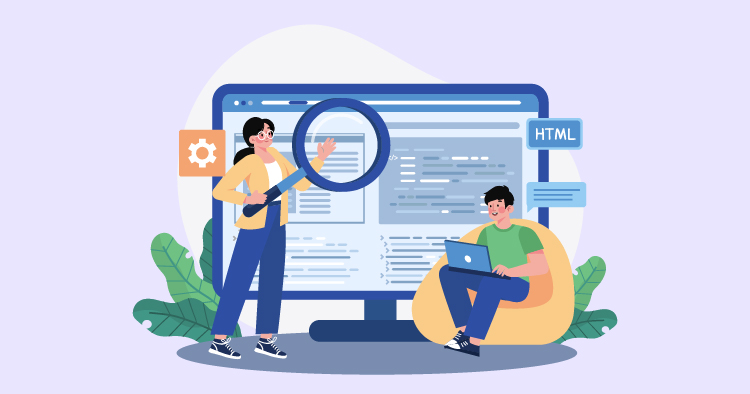When launching a business online, getting two things right is crucial: your website and your marketing. Think of your website as your online shop window—it’s where customers get their first impression of what you’re all about. But if you don’t tell people about it, they might never find you. That’s where marketing comes in. It’s not just about getting your website out there; it’s about weaving together a digital experience that tells your story and meets your business goals. Learning to blend web development with intelligent marketing is a big deal if you want to stand out and make an impact.
Understanding Web Development and its Role in Marketing
Web development is incredibly important for marketing. A well-made website can do wonders for a business by drawing in people, keeping their interest, and getting them to take action, like buying something or signing up for a newsletter. It’s where you can see marketing strategies like content marketing, search engine optimization (SEO), and social media marketing in action.
Good web development ensures marketing isn’t tripped up by tech problems. It also lays a solid foundation for marketing plans, making sure they work well and reach the right people in the right way.
Identifying Marketing Goals for Your Small Business
For small businesses, it’s essential to have clear marketing goals. These goals should be SMART: specific, measurable, achievable, relevant, and time-bound. They guide your marketing and let you see how well it’s working.
Small businesses often aim to increase awareness of their brand, generate more leads, increase sales, improve customer engagement, and keep customers coming back. The goals can change based on the business’s activities, the people it’s trying to reach, and its growth.
Knowing your goal is the first step to a sound marketing plan. It helps ensure that your work on your website supports your bigger marketing goals.
Incorporating Web Development into Marketing Strategies
You can boost their power by blending web development with your marketing plans. For example, SEO needs an organized website that loads quickly to show up higher in search results. Content marketing is more effective when your website looks good and is easy to navigate, making people want to stick around and read or watch your content.
Mixing web development with marketing has many benefits. It ensures that your website is set up to get people to take action, provides them with a smooth experience, and clearly communicates your brand’s message. A website that matches your marketing goals can be a powerful tool for attracting and keeping customers.
Select one of over 500 designs and establish your online presence.
- Free Web Hosting
- Fully Managed Solutions
- Scalable Websites
- No Hidden Cost
Optimizing Your Website for User Experience
Creating a website that offers a great user experience is essential. It’s all about ensuring visitors find your site easy to use, quick to load, and pleasant to look at. A well-designed site can make people want to stick around and explore what you offer.
To make your website more user-friendly, focus on having a simple navigation menu. Your pages should load quickly to keep visitors’ attention. A clean and attractive design can also make a big difference. Plus, ensuring your site works well on many devices, like phones and tablets, is essential, not just desktop computers.
Leveraging Content Marketing with Web Development
Building your website in a certain way can really help with content marketing. A good web design and a content management system make it easy to create new content, keep it organized, and make changes when needed.
When you’re planning your content marketing, consider how your website can best showcase your content. This might mean adding sections for blog posts, videos, or infographics that are easy for visitors to find and enjoy. The goal is to make your content as visible and user-friendly as possible.
Harnessing the Power of SEO with Web Development
How you build your website can impact how easily people find you through search engines like Google. Your site will likely rank higher in search results if it is well-structured, uses the right keywords, and has clean code.
To improve your SEO, streamline your website’s code and use metadata correctly. A search engine-friendly site structure can also help you attract more visitors looking for what you offer.
Integrating Social Media Marketing and Web Development
Combining social media marketing with your website can expand your online reach. Adding social media buttons and live feeds to your site makes it easy for visitors to share your content and connect with you on platforms like Facebook and Twitter.
To get the most out of social media, share buttons where people can easily see them. Embedding your social media feeds can also keep your site fresh and exciting. Just make sure these features don’t slow down your site. And don’t forget to create share-worthy content that matches what your social media followers like, whether helpful blog posts, eye-catching infographics, or engaging videos.
Using Conversion Rate Optimization Techniques
Improving your website’s conversion rate is a key step in ensuring visitors do more than just look around—they take action. Whether that’s buying a product, joining your mailing list, or reaching out through a contact form, your website needs to smoothly guide them to that next step.
Select one of over 500 designs and establish your online presence.
- Free Web Hosting
- Fully Managed Solutions
- Scalable Websites
- No Hidden Cost
Creating impactful landing pages is essential. They should grab attention with a simple message that speaks directly to what your visitors are looking for. The design should be visually appealing, and the call-to-action (CTA) must stand out, making it easy for visitors to take the next step.
But an excellent design is just the start. Ensuring forms are simple to fill out, and the checkout process doesn’t cause headaches is just as important. If visitors get frustrated, they’re likely to leave without converting.
It’s also wise to monitor how things work and make necessary adjustments. Changing the color of your CTA button or tweaking the wording of your landing page could make a big difference. The key is making these changes based on what the data tells you and what your users want.
Mobile Optimization: Reaching Your Audience on-the-go
With more people than ever using their phones to browse the internet, having a website that looks good and works well on mobile devices isn’t just nice to have—it’s a must. A mobile-friendly site ensures everyone has a great experience, no matter their device.
When developing a website, it’s important to use responsive design. Your site will automatically adjust to look its best on any screen size. You must also ensure images and videos don’t take forever to load on mobile and that buttons and links are big enough to tap without zooming in.
Speed is super essential for mobile users. Nobody enjoys waiting for a slow website to load, especially on a phone. Technologies like sped-up Mobile Pages (AMP) can make your site load faster, which not only keeps your visitors happy but can also help your site rank better in search engine results.
Tracking and Analyzing Website Performance
Understanding how your website performs, and how visitors interact with it is crucial for success. Web development is critical in setting up tools like Google Analytics, which provides valuable data on user behavior, including page views and conversion rates.
When you analyze your website’s performance, you look at metrics such as how often people leave after viewing just one page (bounce rate), how long they stay on your site (average time on site), and how usually they complete a desired action (conversion rate). This information helps you see what’s working and what’s not, allowing you to make necessary changes.
Web developers can also set up specific tracking for goals and events on your site. This gives you a clearer picture of how users interact with particular features, like forms or videos. With this data, you can make informed decisions to enhance your website’s performance and the overall user experience.
Staying Ahead of the Curve: Emerging Trends and Technologies
To keep your business competitive, it’s essential to stay up-to-date with the latest developments in web development and marketing. New trends like artificial intelligence, voice search optimization, and sophisticated chatbots are changing the game.
Being open to change and ready to adopt new technologies can advance your business. Therefore, you should always look for new tools and platforms to make your web development and marketing strategies more effective.
You can stay current by joining industry forums, attending webinars, and following experts in the field. Trying out new trends can give your business an edge, potentially leading to more growth and better engagement with your audience.
Final Thoughts
Success in the digital world hinges on more than just having a website. It’s about creating an online presence that speaks to the people you want to reach. When you think about marketing from the beginning, you can design a website that doesn’t just serve up information but engages with users and even gets ahead of their wants and needs. With technology, having an up-to-date site and good marketing are essential. Businesses that get the mix of web development and marketing right are setting themselves up for success online.



